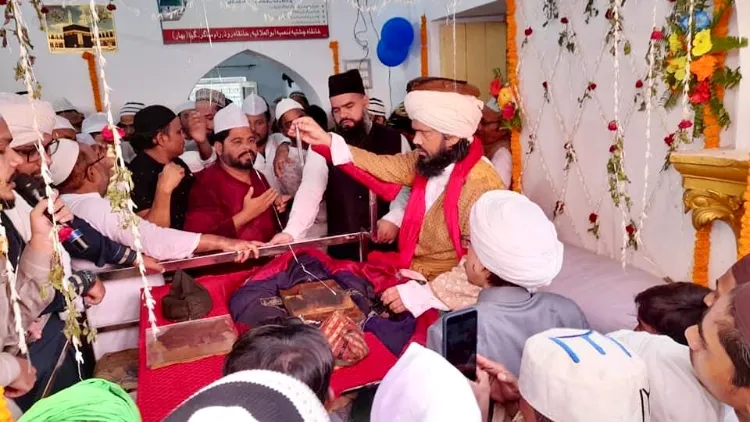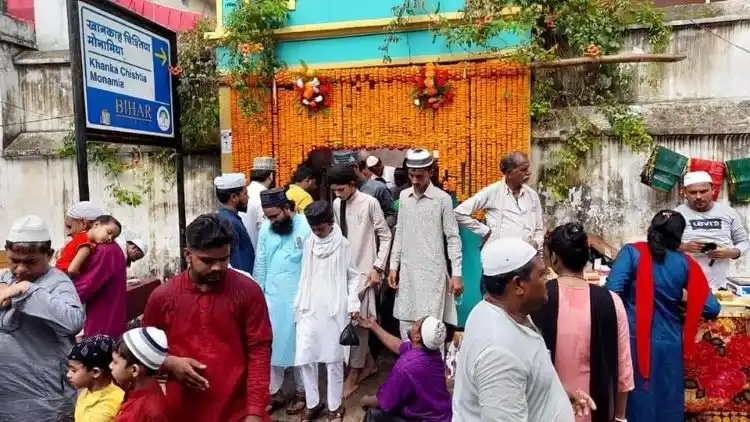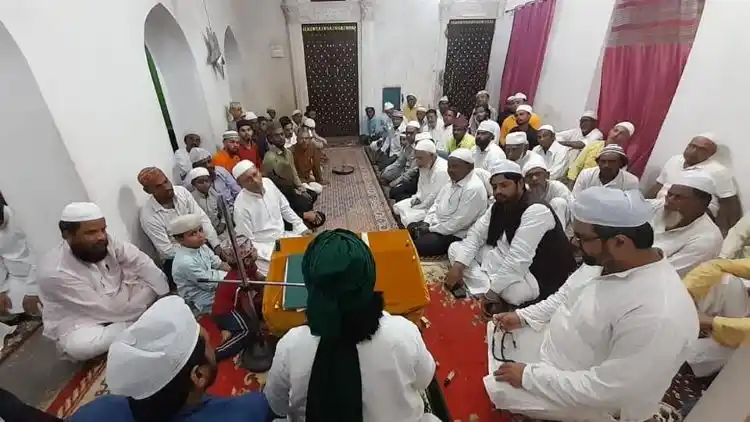
Seraj Anwar/Patna
A khanqah (communion or a mutt of Sufis) in Gaya is not only an inclusive place for the people of different faiths to visit and offer their reverence to the Almighty but also maintains a 200-year old tradition of serving ‘chai’ as tubrukh or Prasad, as Hindus call it – as blessings to the visitors.
This tea is called 'Khankahi Chai' and this tradition is as old as the first crop of tea in the country. Though on all other days, the tea made normally, during the Seerat Conference, i5’s a special tea called, Sheer chai.
Located in Gaya, the city of Lord Vishnu and Gautam Buddha, the place Chishtiya Munamiya Abul Olayya’s Khanqah is visited both by Hindus and Muslims.
It is believed that the practice of holding a Majlis (conference) of Seerat (recitation of the story of the life of Prophet Mohammad) was first started from here on Rabbi-ul Awwal, the first day of the Islamic calendar. Later, it gradually spread to the rest of the country.

The devout throning the Khanqah
In this khanqah, the tradition has been going on since 1840 AD. The Seerat conference is a 12-day annual event. The history of this khanqah dates back to 1,000 years. This is probably the only Khanqah in Bihar to organize Seerat-un Nabi for 12 days.
The khanqah is also part of the Sufi circuit of Bihar.
Interestingly, like the Hazratbal shrine in Kashmir, Chishtiya Munamiya Abul Auliya’s Khanqah also houses a relic of Prophet Mohammad.
The Khanqah is located in a predominantly non-Muslim neighbourhood. It’s situated close to Vishnu Pad, a shrine in the name of Lord Vishnu and Ramsagar Lake both Hindu pilgrimage sites. The closest Muslim locality Mohalla Nadraganj is about one km away.
The caretaker of the Khanqah is Sufi Syed Shah Mohammad Sabah Uddin Chishti Munami Abul Ulai.
This Khanqah was established 1,000 years before the entourage of Khwaja Moin Uddin Chishti, whose mausoleum is in Ajmer, Rajasthan, came to India.

The Seerat conference in progress inside the khanqah
Earlier it was located in Kalpi Sharif of Kanpur. At the behest of Emperor Dawood Shah, it was shifted to Hajipur, Bihar. After this, he stayed from there at Mughalpura in Patna and then at Danapur at the behest of Emperor Shah Alam Sani. In 1840, Hazrat Khwaja Syed Shah Ata Hussain Fani moved from Medina to Gaya and then stayed on.
Hazrat Khwaja-e-Bihar Haji al-Harmain Hazrat Sayyid Shah Ata Hussain Fani Chishti Monami traveled to Arabia and Azam in 1840 AD. During his stay there, he realized that the people need to be told about the life story of the Prophet. Thereafter he narrated the story of Prophet Mohammad in 14 chapters (Majalis).
He was the first narrator of Seerat. It is held soon after Isha (night) prayers on the first day of the Islamic calendar and last upto12 Rabiul Awwal in the Khanqah. Even today this tradition of followed by Sajjadanshin Sayyid Shah Mohammad Sabah Uddin Chishti.
Hindus visit the temple of Vishnupad, where Lord Vishnu has set his foot. They come to pray for their ancestors during the fortnight of Pitrapaksha. Those coming for their ancestors also visit the Khanqah and offer prayers.
The khanqahi chai is served on all days during the Seerat conference. On the first day of the Month, Rabiul-awwal the devotee can have a glimpse of the Holy relic after each namaz.
Women devotees come for Zohar prayers. In the morning, processions from different areas of Gaya city reach here and conclude.
Faisal and Syed Fuzail Ahmed, who are associated with Khanqah, say Muslims can dispel a lot of misgivings and misunderstandings about Islam by being aware of Hazrat Mohammad's vision.
